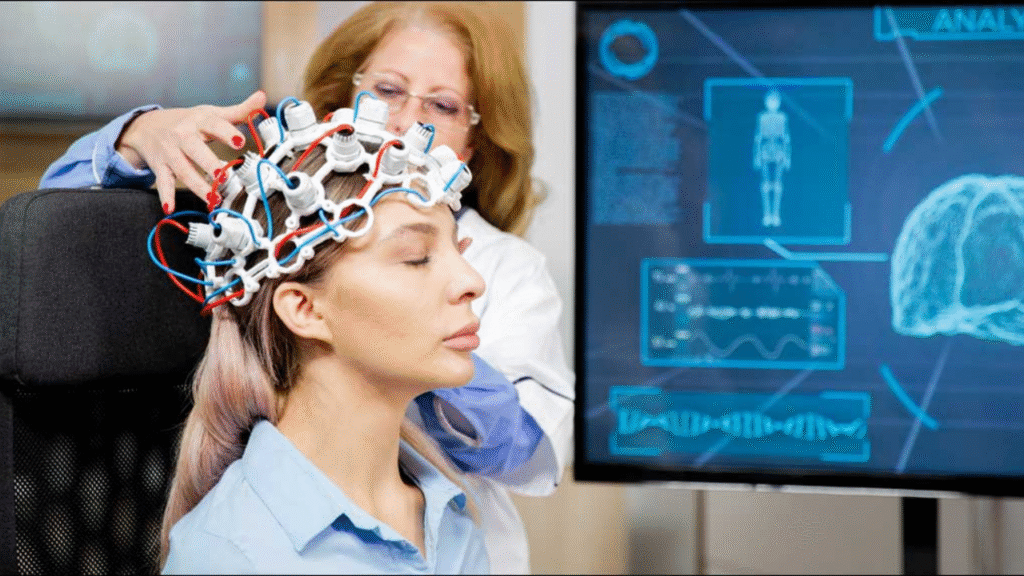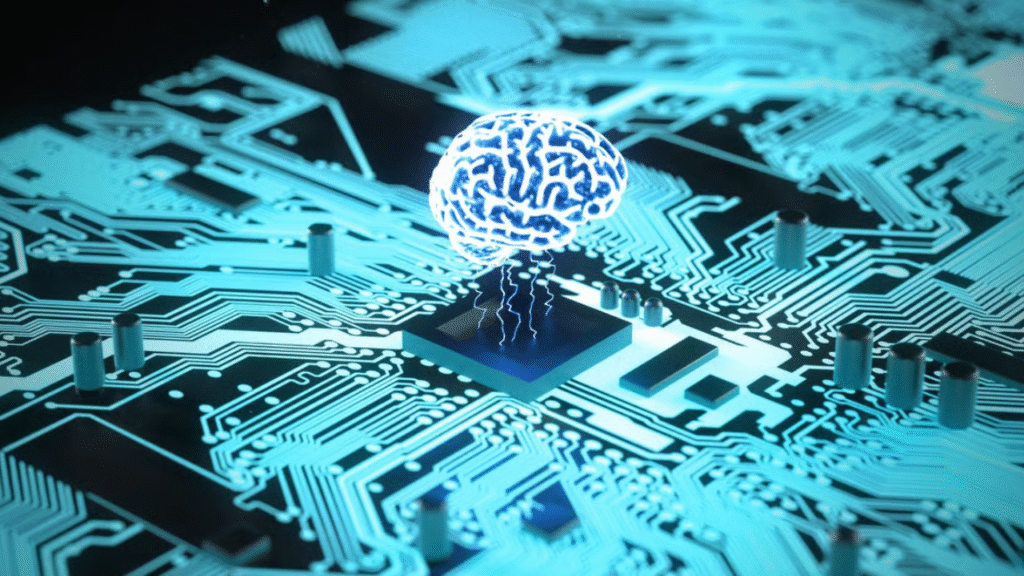Imagine turning off the lights, typing a message, or controlling a drone—just by thinking. No clicking, no touching—just pure brainpower. Welcome to the fascinating world of Brain-Computer Interfaces (BCIs), a revolutionary leap in thought-controlled technology that could redefine how humans interact with machines. From restoring mobility to paralyzed patients to boosting gaming experiences, brain-computer interfaces are pushing the boundaries of science fiction into scientific reality.
In this blog, we’ll take you inside the world of brain-computer interfaces—what they are, how they work, and why they’re being hailed as one of the most exciting neurotechnology innovations of our time.
🧠 What Are Brain-Computer Interfaces?
Brain-computer interfaces (BCIs) are systems that enable direct communication between the brain and an external device—such as a computer, robotic arm, or prosthetic limb. They bypass traditional pathways like speech or muscle movement, allowing the brain to control devices directly using neural signals.
This isn’t just a futuristic concept; it’s already happening. Companies like Neuralink, Synchron, and academic institutions around the world are making major strides in developing brain-controlled devices for real-world use.

⚙️ Brain-Computer Interfaces: How They Work
So how do brain-computer interfaces actually work?
At their core, BCIs work by detecting and translating electrical signals generated by the brain. Here’s a simplified breakdown of the process:
1. Signal Acquisition
Electrodes are used to pick up electrical signals from neurons. These can be:
- Invasive (implanted directly into the brain)
- Non-invasive (placed on the scalp, like in EEG headsets)
2. Signal Processing
Once collected, these signals are filtered and amplified. The goal is to isolate meaningful brainwave patterns associated with thoughts or intentions.
3. Translation Algorithms
Advanced algorithms convert neural signals into digital commands that a computer can understand. For example, a certain thought pattern might be interpreted as “move left” or “click.”

4. Output Execution
The translated command is sent to an external device—like a cursor, wheelchair, or robotic arm—which then carries out the desired action.
This cycle happens in milliseconds, allowing for near real-time interaction between the brain and machine.
🚀 Real-World Applications of Brain-Computer Interfaces
Brain-computer interfaces are no longer confined to science labs. They’re making waves in various fields:
🩺 1. Medical Rehabilitation
Perhaps the most impactful use of BCI technology is in medicine. BCIs are helping patients with spinal cord injuries, ALS, or strokes regain control of limbs or communicate using thought-controlled technology. A paralyzed individual, for instance, can use a BCI to operate a robotic arm or type out messages on a screen.
🎮 2. Gaming and Virtual Reality
Gamers, rejoice! BCIs are now being integrated into VR headsets and gaming platforms. Imagine moving your game character or manipulating a virtual environment with just your thoughts. It’s not just cool—it’s immersive and deeply personal.

🛠️ 3. Prosthetics and Mobility Devices
Advanced prosthetic limbs connected to neural interfaces are enabling amputees to move artificial limbs as naturally as their own. The feedback systems even allow users to “feel” touch or pressure.
💬 4. Communication Aids
For individuals with speech impairments or locked-in syndrome, BCIs offer a new way to communicate. Thought-to-text systems can allow users to form sentences on a screen just by thinking.
🌐 5. Smart Home and IoT Integration
From adjusting the thermostat to switching on lights, BCIs are beginning to interact with smart home ecosystems. Your thoughts could soon control your entire home setup.
🔬 The Science Behind the Magic
While brain-computer interfaces may seem magical, they’re grounded in decades of neuroscience, engineering, and AI. Recent advances in machine learning have significantly improved the accuracy of neural decoding, making BCIs more reliable and practical for everyday use.
Innovators are also working on non-invasive BCIs that eliminate the need for surgical implants, making the technology safer and more accessible. For instance, EEG-based headsets are already being used for meditation, focus enhancement, and basic device control.
🌍 Brain-Computer Interfaces and the Future
The future of brain-computer interfaces is incredibly promising, with applications extending far beyond healthcare and entertainment.
- Education: Personalized learning through brainwave monitoring and adaptive content delivery.
- Workplace Productivity: Monitoring attention and mental fatigue to improve workflow.
- Mental Health: Real-time monitoring of anxiety or depression symptoms through neural data.
- Military: Advanced communication systems and drone operation via mind control.
Even NASA and DARPA are exploring how brain-computer interfaces could be used in extreme environments like space or combat zones.

❓ Unlocking the Full Potential: What Stands in the Way?
As exciting as all this sounds, BCI technology isn’t without challenges:
🛑 1. Ethical Concerns
Who owns your brain data? What if thought patterns are misused or hacked? These questions are sparking debates around data privacy, consent, and mental autonomy.
🧪 2. Biological Limitations
Implanted BCIs face issues like scar tissue, infection, or signal degradation over time. Researchers are working on more biocompatible materials to solve these problems.
💸 3. Cost and Accessibility
Cutting-edge brain-controlled devices can be expensive, limiting access. Democratizing BCI access is crucial for inclusive innovation.
🧠 4. Training Time
BCIs often require users to train their brains to generate the right patterns. This learning curve can vary significantly between individuals.

✅ The Bottom Line: A Powerful Human-Tech Fusion
Brain-computer interfaces are one of the most groundbreaking scientific innovations of our time. They offer the extraordinary potential to restore function, enhance human capabilities, and redefine how we engage with machines and each other.
As the technology becomes more refined and accessible, we’re looking at a future where thought-controlled technology could become part of our daily lives. From controlling smart devices to assisting disabled individuals to achieve greater independence, brain-computer interfaces are set to change the way we think—literally.
The next decade may well be defined not by smartphones or touchscreens, but by what we can do with just a thought.
💡 Final Thoughts
The era of brain-computer interfaces is here—and it’s only just beginning. As AI, neuroscience, and engineering continue to evolve, the line between mind and machine will continue to blur in exciting, empowering ways. Whether it’s helping someone walk again, enhancing video games, or typing with your thoughts, BCI technology is turning imagination into action.
So next time you think about the future, remember: it might just listen back.








